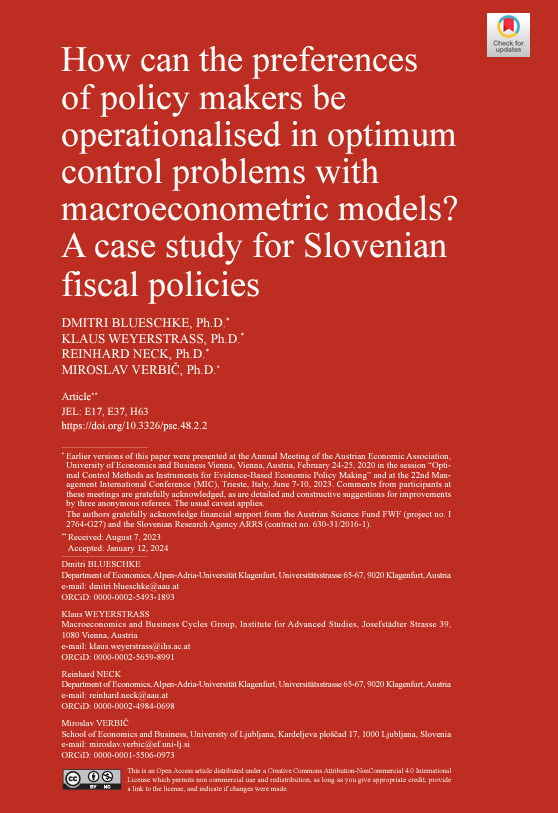How can the preferences of policy makers be operationalised in optimum control problems with macroeconometric models? A case study for Slovenian fiscal policies
DOI:
https://doi.org/10.3326/pse.48.2.2Keywords:
policy preferences, macroeconomics, fiscal policy, Slovenia, optimum controlAbstract
In this paper, we use the results of a survey among Slovenian politicians in order to design an objective function for an optimal control problem with a macroeconometric model for fiscal policy in Slovenia that takes account of policy makers’ preferences. The paper discusses three different scenarios in which the policy preferences revealed in interviews can be included in the objective functions of the control problems. These objective functions are then used to calculate optimal fiscal policies for the Slovenian economy until 2030. For this purpose, we utilise the macroeconometric model SLOPOL10 and the OPTCON2 algorithm. The results indicate qualitatively similar behaviour of the optimised dynamic system and a better performance (lower values of the loss due to deviation from “ideal” paths) from a ranking-based approach than from an ad-hoc assumption of policy makers’ preferences. We sketch how to integrate the approach in a decision-support system for macroeconomic policy design.

Downloads
Published
How to Cite
Issue
Section
License
Copyright (c) 2024 Dmitri Blueschke, Klaus Weyerstrass, Reinhard Neck, Miroslav Verbič

This work is licensed under a Creative Commons Attribution-NonCommercial 4.0 International License.








